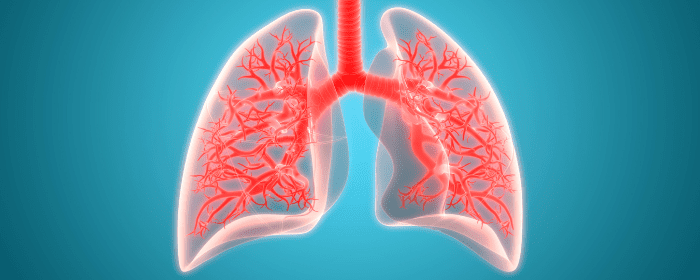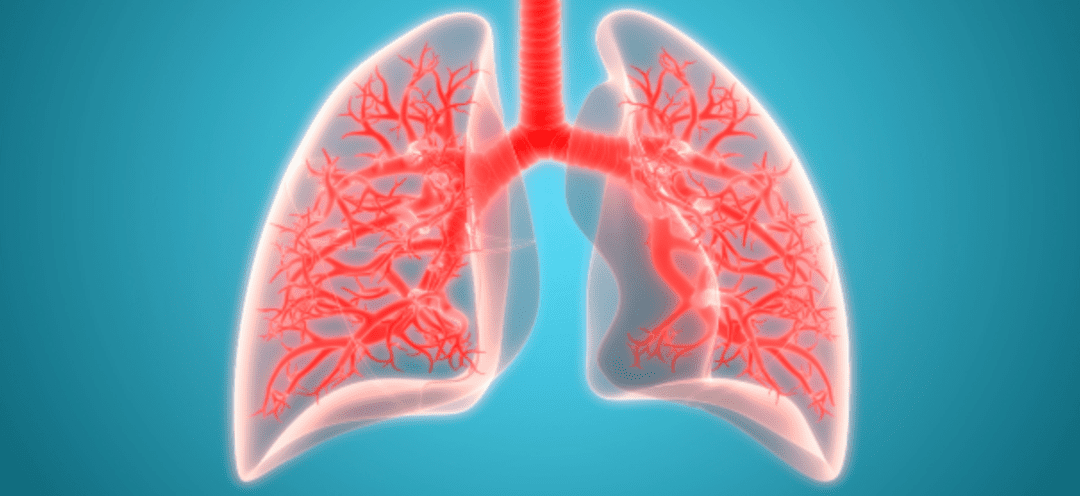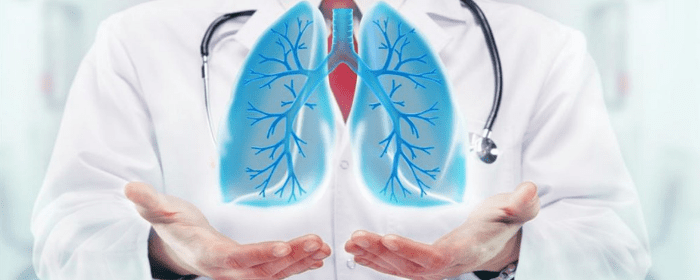
by admin | Nov 2, 2022 | COPD, Health Awareness
The symptoms of chronic obstructive pulmonary disease (COPD) often worsen over time. As a result, patients with the condition will experience increased wheezing, mucus production, shortness of breath, and discomfort.
Regularly practicing breathing exercises can help slow disease progression and manage symptoms. In addition, breathing exercises can reduce tangential symptoms, such as anxiety from shortness of breath.
Diaphragmatic Breathing
The diaphragm is the most significant muscle of respiration. As with any other muscle in the body, exercise strengthens the diaphragm and helps it work more efficiently.
Diaphragmatic breathing exercises help you use your diaphragm correctly so breathing requires less energy and effort.
To practice diaphragmatic breathing:
- Lie on your back
- Place one hand on your chest and one on your diaphragm, below the ribcage
- Breathe in slowly through your nose, feeling the diaphragm expand
- Tighten your stomach muscles as you exhale
When practicing diaphragmatic breathing, the hand on your chest should remain mostly still. In contrast, the hand on your diaphragm should move up and down with your inhale and exhale.
Pursed Lip Breathing
Pursed lip breathing works to control shortness of breath, slowing the pace of breathing and releasing trapped air from the lungs.
Once you master pursed lip breathing, it can effectively calm your breath during activity.
To practice pursed lip breathing:
- Relax the shoulder and neck muscles
- Inhale through your nose, keeping your mouth closed
- Pucker your lips as if to whistle
- Gently exhale through your pursed lips
In pursed lip breathing, exhalation is more critical than inhalation. While the technique does not require taking a deep breath, your exhale should take twice as long as your inhale.
Huff Cough
The body coughs to remove excess mucus from the lungs naturally. The huff cough allows you to cough effectively without overly straining your muscles.
To practice the huff cough:
- Sit comfortably in a chair
- Inhale a little more deeply than usual
- Using your stomach muscles, blow the air out in three breaths
- While releasing the breaths, make a “ha, ha, ha” sound
While huff coughs lack the force of a regular cough, they are often more effective at removing excess mucus.
Improve Your COPD Through Breathing Exercises
Practicing these exercises daily can strengthen your diaphragm, improve shortness of breath, and release excess mucus without straining. Breathing exercises have been shown to improve the quality of life for COPD patients.
For more health awareness blogs, please visit www.stemedix.com/blog.

by admin | Nov 12, 2021 | Stem Cell Therapy, COPD, Mesenchymal Stem Cells, Stem Cell Research
Characterized by chronic inflammation that obstructs normal airflow from the lungs, chronic obstructive pulmonary disease (COPD) affects an estimated 65 million people and remains the third leading cause of death worldwide. Caused by prolonged exposure to gasses or other harmful particulates, and especially cigarette smoke, COPD is typically characterized by breathing difficulty, cough, mucus (sputum) production, and wheezing[1].
While there are many different forms of COPD, the two most common are emphysema and chronic bronchitis; unfortunately, these two often occur simultaneously and significantly exacerbate the effects of COPD. With the number of people living with COPD expected to increase by 30% over the next decade, the disease is projected to remain among the leading causes of preventable illnesses and deaths for the foreseeable future.
There isn’t a known treatment or cure for COPD, rather a series of physical and chemical treatments designed to ease symptoms and slow progression of the disease; some current treatment includes bronchodilators, oral and inhaled steroids, antibiotics, oxygen therapy, and surgeries including lung transplantation and bullectomy. To date, these treatments have demonstrated limited success and are often associated with several severe adverse effects.
Recent research has shown mesenchymal stem cells (MSCs) to be an effective therapeutic option for treating inflammation and autoimmune diseases, making them a promising therapeutic treatment option for COPD.
In this pilot clinical study, Le Thi Bich et al. evaluated the safety and efficacy of umbilical cord-derived (UC) MSCs for treating COPD. This pilot clinical study included participants who were 40-80 years old and diagnosed with moderate to severe COPD (stage C or D per the Global Initiative for Chronic Lung Disease). Using UC-MSCs cultured and expanded using the UC-SCI technology, Le Thi Bich et al. administered MSCs intravenously to participants as an intervention for assessment of therapeutic treatment for COPD.
After administering UC-MSCs on day 0, participants were evaluated for safety and efficacy at months 1, 3, and 6. At the end of month 6, researchers concluded that UC-MSC transplantation significantly improved some important outcomes of COPD, including mMCR, CAT, and number of exacerbations. While not statistically significant, the authors credit these improvements to an observed downregulation in inflammation.
While there have been several studies evaluating the potential of MSCs as therapies for several diseases, Le Thi Bich et al. ‘s study is the first clinical trial to use US-MSCs as a treatment for COPD.
The authors conclude that the UC-MSC transplantation occurring in this pilot study significantly improved the quality of life and clinical conditions of COPD patients, most likely a result of the strong immunomodulation capacity of the UC-MSCs – especially when compared to findings of other studies using bone-marrow MSCs.
The authors also conclude that the systemic administration of UC-SC appears safe and, although treatment efficacy was not significantly different between those with different stages of COPD, those with stage D COPD did exhibit stronger medical response after UC-MSC transplantation than the medical response observed in patients with stage C COPD.
The observed results of Le Thi Bich’s pilot study provide an important and significant basis for further clinical study of the potential of MSCs in patients with COPD.
Source: “Allogeneic umbilical cord-derived mesenchymal stem cell … – NCBI.” 13 Feb. 2020, https://www.ncbi.nlm.nih.gov/pmc/articles/PMC7020576/.
[1] “COPD – Symptoms and causes – Mayo Clinic.” 15 Apr. 2020, https://www.mayoclinic.org/diseases-conditions/copd/symptoms-causes/syc-20353679. Accessed 1 Dec. 2021.

by admin | Jun 4, 2021 | Stem Cell Therapy, COPD, Stem Cell Research
For patients facing a lung disease, including COPD, current and traditional therapeutic options may not be as effective in managing symptoms or slowing the progression of the condition so researchers have turned their attention to the potential benefits of stem cell therapy and ex vivo lung bioengineering in hopes of developing new and effective therapeutic approaches to treat lung disease.
Demonstrating a rapid progression over the last decade, the development of stem cell therapies and bioengineering approaches for lung disease has primarily shifted focus to the application of immunomodulatory and paracrine actions of mesenchymal stem cells (MSCs) and endothelial progenitor cells (EPCs) and the field of ex vivo lung bioengineering.
In this manuscript, Weiss reviews clinical trials in lung disease and provides the current progress for a variety of therapeutic options. Specific treatments reviewed include:
- Structural Engraftment of Circulating or Exogenously Administered Stem Cells
- Ex Vivo Derivation of Lung Epithelial Cells from Embryonic Stem Cells or Induced Pluripotent Stem Cells (iPS)
- Endogenous Lung Stem and Progenitor Cells
- Circulating Fibrocytes
- Endothelial Progenitor Cells
- MSCs and Immunomodulation of Lung Disease
The author points out that although preclinical literature supports the use of EPCs and MSCs in acute lung injury and/or chronic inflammatory and immune-mediated conditions (including asthma, bronchiolitis, obliterans, and bronchopulmonary dysplasia), these preclinical models are not always predictive of clinical behaviors. As such, clinical investigations of these cell-based therapies for lung disease have been slow to develop.
Currently, the only effective treatment for severe lung diseases, including BPD, CF, COPD, and IPF, is lung transplantation. With a 50% five-year post-transplant mortality rate, essential lifelong immunosuppression (to prevent chronic lung rejection), and a critical shortage of donor’s lungs, research has turned its attention toward manufacturing surgically implantable ex vivo (or “outside the living body”) lung tissue. While several challenges still exist, recent significant progress has been made using both synthetic and donor tissue in generating ex vivo tissue for use in various lung treatment applications.
The author concludes that while exciting progress has been made in the field of stem cell therapy and ex vivo generation of tissue to treat lung diseases, much research is still on the horizon. Within future research, they hope to better understand the identity of endogenous lung airway, the development of functional airway and alveolar epithelial cells from ESCs and iPS cells, and a better understanding of the physiologic and pathophysiologic roles of EPC and Fibrocytes in lung diseases.
The use of stem cell therapy and ex vivo lung bioengineering offers tremendous potential for the treatment of lung diseases, however, the clinical use of artificial engineered or decellularized scaffolds for use in treating lung disease is likely to be several years off.
Source: (n.d.). Current Status of Stem Cells and Regenerative Medicine in Lung …. Retrieved from https://www.ncbi.nlm.nih.gov/pmc/articles/PMC4208500/

by Stemedix | May 31, 2021 | COPD, Stem Cell Therapy
Chronic obstructive pulmonary disease (COPD) affects 250 million people each year and is the cause of nearly 5% of deaths globally. This family of airway obstruction conditions is characterized by the loss of lung tissue and airway obstruction caused by chronic inflammation of the airways. As a result, components of the lungs, including the alveoli, are destroyed over time. Using regenerative medicine, including stem cell therapy, can address the damage caused by these conditions.
What Is COPD?
COPD is a progressive disorder that makes breathing very difficult. As the airways become obstructed, patients may experience symptoms such as mucus production, wheezing, cough, and difficulty breathing. Smoking is believed to be the cause of 85 to 90% of COPD cases, though factors such as long-term exposure to pollution or irritants could also contribute to the conditions.
The two main types of COPD are emphysema and chronic bronchitis. In emphysema, the alveoli at the end of the air passageways are destroyed by exposure to cigarette smoke or other irritants. In chronic bronchitis, the bronchial tubes become inflamed, which carry air to and from the air sacs.
Currently, there are several types of medications available to help control flare-ups of COPD, but each patient responds differently to treatments. There are also oxygen therapies available to aid patients with low blood oxygen levels and to provide easier breathing.
Stem Cell Therapy for COPD
Stem cell therapy is a natural alternative to other medications that have caused serious side effects or failed to produce measurable improvements. Through this regenerative medicine approach, patients’ air sacs and damaged lung tubes have the potential to be repaired, lung capacity increased and improved breathing.
Stem cells are the building blocks of the body due to their ability to regenerate and transform into virtually any specialized cell type. Through this treatment, stem cells are sourced by either the patient or an umbilical cord donor and re-delivered through direct injection, intravenously, and/or through a special nebulizer via inhalation. Depending on the patient’s condition, additional treatments may be needed. After stem cell therapy, COPD patients may be advised to undergo post-treatment lung rehabilitation to promoted optimal treatment outcomes.
Stem cell therapy continues to be an active topic in regenerative medicine research. It is not a cure and it may not be right for all patients with COPD, but it could be a promising alternative to anyone who is looking for other options outside of treatments with severe side effects or those that haven’t shown beneficial outcomes. If you are interested in learning more about Stem cell therapy for COPD contact a care coordinator today!

by admin | Nov 12, 2020 | COPD, Stem Cell Therapy
Several recent studies have shown that adult stem cells, and specifically mesenchymal stem cells (MSC), appear to support the regeneration and protection of lung tissue, making them a very promising potential next-generation therapy option for the treatment of COPD.
Known treatments for COPD are designed to address symptoms and not the actual cause of the condition; considering that COPD continues to be among the leading causes of death among developed countries and that it’s considered to be a preventable and treatable disease there is a clear and compelling need to develop more effective therapeutic strategies.
As COPD develops, its inflammatory properties are characterized by the death of the epithelial cells, loss of the terminal air-space within the lung, and ongoing breakdown of lung tissue responsible for stability, elastic recoil, and other physiological functions essential for respiration.
Since the damage to these cells is permanent and not repairable, researchers continue to explore the use of MSCs as a potential option to repair and restore lung structure and lung function in people living with COPD.
Currently, any therapeutic-based COPD treatment option relies on the continued use of bronchodilators and/or corticosteroids to reduce the symptoms of COPD. While both of these drugs have been able to slow the worsening of COPD symptoms, the benefits appear to be ineffective as a long-term treatment option for even mild to moderate COPD.
Because of their capacity to induce growth of skeletal muscle cells, blood, fat, vascular systems, and connective tissues throughout the body, and since they seemingly have a capacity for self-renewal, MSCs are now being considered as a therapeutic treatment option for COPD.
In addition to their versatility throughout various cells, tissues, and systems, MSCs are relatively simple to isolate, they expand with high efficiency, are easily able to be processed and transported from the lab setting to point-of-use, and are highly compatible with different delivery methods and formulations currently being used by medical professionals.
Early research has also demonstrated that MSCs possess powerful immunosuppressive properties and are easily able to seek out and migrate to specific sites of tissue injury; this appears to be especially promising in the tissue of the lungs where not only have MSCs demonstrated the ability to suppress inflammation and growth factor production but also been found to reduce fluid retention within the lungs.
While these findings are promising, Phase II clinical trials to establish the use of Mesenchymal stem cells as a therapeutic treatment in patients with severe COPD are currently ongoing. Specifically, this trial is examining how effective MSCs derived from normal healthy adult donors in the treatment of COPD.
Although further study is required, early indications show promise that stem cell therapy, and specifically the use of MSCs, could be a very effective therapeutic treatment option in patients with moderate to severe COPD.
Reference: (n.d.). Mesenchymal stem cell therapy for the treatment of … – PubMed. Retrieved November 25, 2020, from https://pubmed.ncbi.nlm.nih.gov/20384521

by admin | Oct 30, 2020 | COPD, Stem Cell Research, Stem Cell Therapy
Chronic obstructive pulmonary disease (COPD) is a lung condition that makes it hard for patients to breathe. In COPD, small airways in the lungs thicken and lose their elasticity. People with COPD have shortness of breath, especially during physical activity. Patients with severe COPD may experience a more challenging quality of life. COPD patients may experience several exacerbations a year which require a stay in the hospital.
Patients with COPD typically need one or more inhalers a day. These inhalers help to open airways and, in some cases, decrease lung inflammation. Patients who also have bronchiectasis may need to take an oral antibiotic every day. During a COPD exacerbation, patients usually must receive powerful steroid treatments intravenously, routine breathing treatments, and supplemental oxygen.
People with COPD are more prone to lung infections, and so they usually receive IV antibiotics for pneumonia. Those who successfully stop smoking can help to prevent further lung damage, however, the inflammation and lung damage persists for a long time. Today, patients are seeking alternative therapies for COPD. Many are discovering regenerative medicine, also known as stem cell therapy, that may offer an incredibly promising therapy for COPD.
The lungs have a large number of naturally occurring stem cells that can restore function. For example, mice who lose half their lung capacity from experimental COPD survive, and natural stem cells within the lungs can restore their lungs to a natural state within 5 months. Unfortunately, humans with COPD cannot repair their lungs as quickly and as fully as mice can. This is why researchers are studying the use of stem cell treatment to restore lung function in patients with COPD.
Studies have shown that stem cells have the potential to help improve lung function. Stem cell treatment improved oxygen and carbon dioxide exchange, exercise tolerance, and cell injury in early studies.
One review did show that stem cell treatment is “safe and may improve patients’ condition and quality of life; however, larger-scale studies are needed to evaluate efficacy.” More research in humans is needed, but the pre-clinical (aka animal and laboratory) research in this area is quite promising.
Reference: Kokturk N, Yıldırım F, Gülhan PY, Oh YM. Stem cell therapy in chronic obstructive pulmonary disease. How far is it to the clinic?. Am J Stem Cells. 2018;7(3):56-71. Published 2018 Aug 1.







 St. Petersburg, Florida
St. Petersburg, Florida
